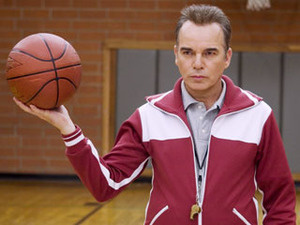Through the years, after hearing countless times from our athletes & their parents that their Coach doesn’t want them to “lift weights”, doesn’t want them to train with us, doesn’t want them to train anywhere else, etc. it starts to get annoying.
After all, kids are # 1, right? At least that’s what “they” say.
In sports, there are experts for certain areas. We bring in experts to The Underground to speak to the kids on nutrition, motivation & mental toughness and any other area we have an opportunity to get help from someone who can help make our athletes better.
That’s the bottom line. Kids are # 1. My friend and colleague, Eric Cressey, a world renown Strength & Conditioning Expert, wrote the article below and gave us permission to share with Undergrounders. HOPEFULLY, the Coaches who have threatened these athletes to never train anywhere else or that they should not train with us will read this.
Those Coaches are the people who need it MOST. BIG thanks to Eric Cressey for sharing and giving us permission to post at The Underground Strength Gym Blog….
Guest Post by Eric Cressey
Q: I really liked your blog article on Crossfit for Baseball, but I am curious what your answer would be to a baseball coach who is adamant players shouldn’t lift weights at all My son’s coach is 100% against it.
A: It’s tough to even know where to begin with this one, but here goes! I’ll begin with a quote from my e-book, The Truth About Unstable Surface Training:
“…resistance training exercises performed on stable surfaces have been demonstrated effective in numerous research studies with respect to improving a variety of athletic qualities, including:
- muscular strength (5)
- power (5)
- aerobic endurance (53)
- running efficiency (54)
- anaerobic endurance (5)
- rate of force development (66,90)
- hypertrophy (5)
- reactive strength (66,90)
- agility (47)
These qualities transfer to improved performance in a variety of sporting tasks, including vertical jump (74), throwing velocity (79), sprinting speed (22), and running economy (53).”
(FYI, the reference numbers in this quote are directly from the e-book, so if you’d like the exact studies, please just request them below in the comments section)
Now, I’ll venture a guess and assume that your coach isn’t looking to manage a team that lacks agility, throwing velocity, sprinting speed, jumping prowess, and rate of force development. To be candid, even those who are stubbornly adhering to a useless training concept like long-distance running for pitchers can get closer to their chosen training effect (as silly as it may be) from lifting!
Further, research has demonstration that resistance training can improve endocrine and immune function, so players will get sick less often and feel better overall.
On an equally important note, remember that resistance training is one of the foundations of today’s physical therapy. Would your coach tell a physical therapist that resistance training as part of a rehabilitation program is inappropriate? I hope not! He’d be fired immediately by an athletic director for overstepping his bounds. So, along that same line of thinking, how in the world it is within his scope of practice to tell a kid that lifting is bad for him – either in terms of increasing injury potential or decreasing performance – is completely beyond me.
Throwing a baseball is the single-fastest motion in sports; you simply don’t decelerate those insane arm speeds without at least a bit of muscular contribution.
Also, don’t forget that ideal strength and conditioning programs encompass a lot more than just lifting weights. They includes good self massage work (foam rollers, etc), mobility training, sprinting/ agility/plyos, and much, much more. It begins with a detailed movement assessment to determine what stability or mobility deficits may eventually lead to injury. It may also be the only avenue through which an athlete learns proper nutrition.
The fundamental problem is that many baseball coaches think of terrible practices like this when they hear the words “lifting weights:”
Can someone please tell me how my “biceps will develop” with this? Only in this video does the biceps EXTEND the elbow. Yikes.
Ouch.
The main message here is that a lot of coaches think that lifting programs are either a) a waste of time or b) flat-out dangerous. Sadly, as the videos above demonstrate, in many cases, they’re correct in their assumptions.
However, eliminating lifting absolutely can really stunt the development of players and increase their likelihood of injuries. Throwing is dangerous when done incorrectly, and so are sprinting, fielding ground balls, and taking batting practice.
We don’t contraindicate those, though, do we? We educate athletes on how to participate in these training initiatives properly.
At Cressey Performance, each one of our pro baseball players lifts four times a week, throws the medicine ball 2-3 times a week, and does supplemental movement training 2-3 days per week during the off-season – and they continue lifting during the season (at a lower frequency and volume). This is true of both position players and pitchers.
Our high school and college guys get after it with similar frequencies as well, and we have middle schoolers involved in strength training programs as part of a feeder program as well. Business is growing, and more and more guys are being drafted and presented with college scholarships. Something is working.
Additionally, beyond just the direct training benefits of this system, there is something to be said for the camaraderie strength and
conditioning does for teammates on top of regular practices. The fact that kids actually requested this says volumes!
Hopefully, articles like this – and bright, forward-thinking coaches – will help to spread the word about what safe, effective training is – and where to get it.
===============
===============
[youtube width=”640″ height=”360″]http://www.youtube.com/watch?v=xbaCU_mYDcA[/youtube]
[youtube width=”640″ height=”360″]http://www.youtube.com/watch?v=lWXZLzfp-0Y[/youtube]


